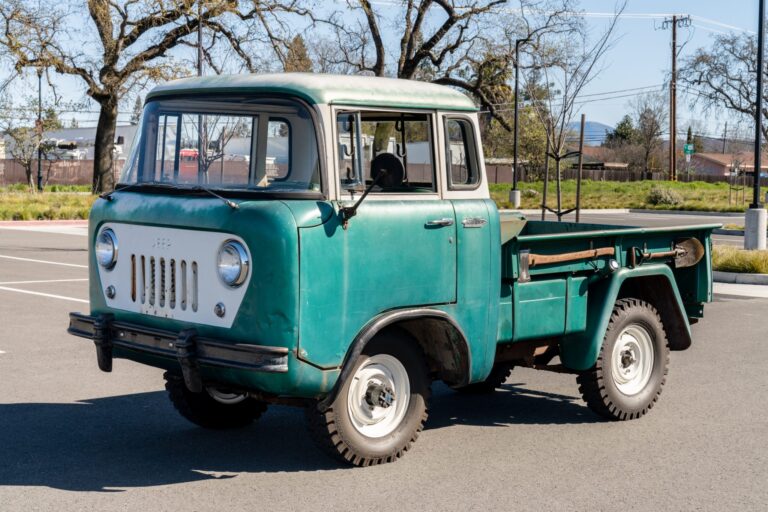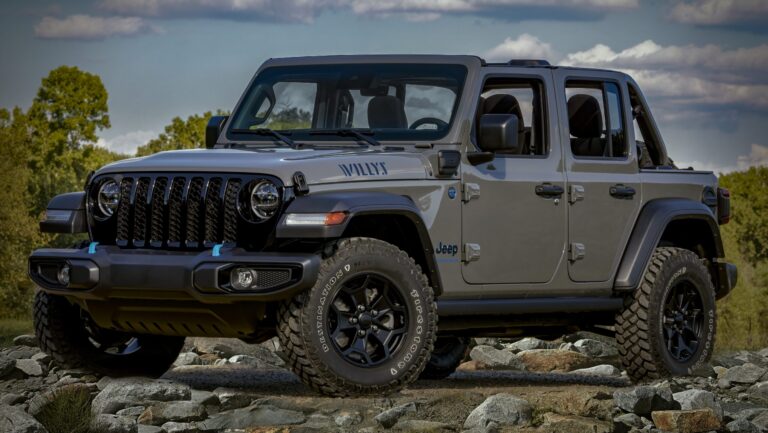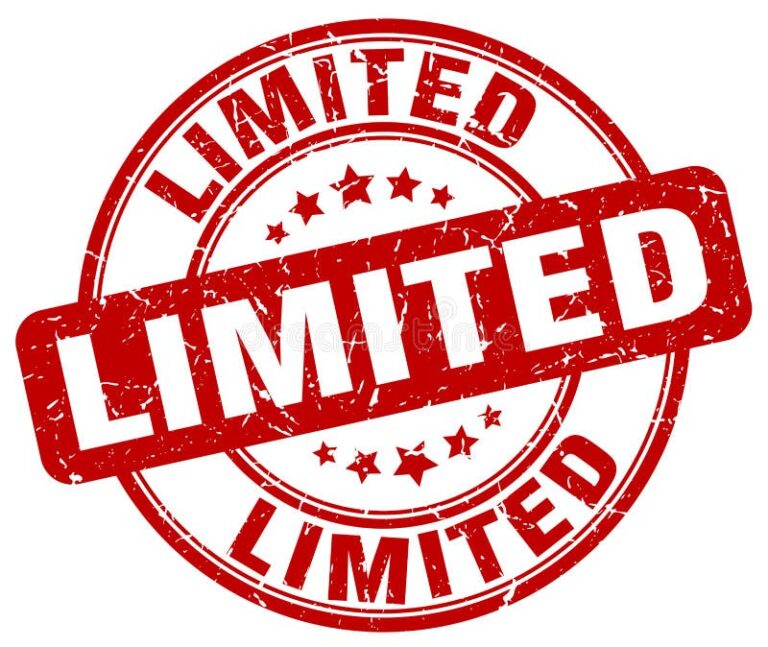2000 Jeep CJ7 For Sale: Unraveling the Myth and Discovering a Timeless Icon
2000 Jeep CJ7 For Sale: Unraveling the Myth and Discovering a Timeless Icon jeeps.truckstrend.com
The quest for a "2000 Jeep CJ7 for sale" is a fascinating one, often born from a deep appreciation for an automotive legend. However, let’s address the elephant in the room right from the start: there was no factory-produced 2000 Jeep CJ7. The iconic Jeep CJ7 concluded its production run in 1986, giving way to the Wrangler (YJ, then TJ models). So, if you’ve encountered a listing for a "2000 CJ7," you’re likely looking at one of a few intriguing possibilities: a highly customized build, a vehicle with an incorrect title year, a Wrangler that’s been extensively modified to resemble a CJ7, or simply a misunderstanding of the CJ’s production history.
This article aims to unravel the myth of the "2000 CJ7" and, more importantly, to guide aspiring owners through the exhilarating process of finding and acquiring a true classic CJ7. Whether you’re looking for an authentic piece of automotive history or a rugged, go-anywhere machine, understanding the CJ7’s legacy and the realities of the market is crucial. We’ll delve into what makes the CJ7 so special, what to look for when buying one (regardless of the listed year), and how to navigate the unique challenges and joys of owning this timeless American icon.
2000 Jeep CJ7 For Sale: Unraveling the Myth and Discovering a Timeless Icon
The Myth of the 2000 CJ7: What You’re Really Looking At
As established, the Jeep CJ7 was produced from 1976 to 1986. Its successor, the Wrangler, took over the mantle of Jeep’s civilian off-roader. So, what could a "2000 CJ7" listing possibly mean?
- Misinformation or Typo: The simplest explanation is often the correct one. It could be a simple typo, with the seller meaning a 1980 CJ7, or perhaps a 2000 Wrangler. Always clarify the VIN (Vehicle Identification Number) to determine the true model year and vehicle type.
- Extensively Modified Wrangler (TJ/YJ): This is a common scenario. Enthusiasts often "CJ-ify" later-model Wranglers. This can involve swapping body panels, grilles, or even entire tubs to replicate the classic CJ look while retaining the more modern amenities or powertrain of a Wrangler. While impressive, it’s not a genuine CJ7.
- Restomod or Custom Build with Modern Components: Some highly skilled builders create "restomod" CJ7s. They take an original CJ7 chassis and body, restore it, and then integrate modern powertrains (e.g., LS V8 engines), updated transmissions, advanced suspension systems, and contemporary interiors. While the chassis might be pre-1987, the completion date of the build could be 2000 or later, leading to confusion in the listing. These are often exceptional vehicles but command premium prices and are distinct from an original CJ7.
- Rebuilt Title with Incorrect Date: Less common, but possible, is a vehicle that has been rebuilt or re-titled where the date of re-titling is confused with the vehicle’s model year.

For the purpose of this guide, we will primarily focus on the considerations for purchasing an authentic classic Jeep CJ7 (1976-1986), as this is what most people are genuinely seeking when they mention a "CJ7." However, the inspection principles apply broadly to any rugged off-road vehicle.
Why the CJ7 Endures: A Timeless Classic
The Jeep CJ7 holds a special place in automotive history. It was the first CJ to offer an automatic transmission and a more refined ride due to a slightly longer wheelbase than its predecessor, the CJ5. This made it more accessible to a wider audience without sacrificing its legendary off-road capability.
Its appeal stems from:
- Iconic Design: The CJ7’s classic round headlights, seven-slot grille, flat fenders, and removable doors and top are instantly recognizable and embody the spirit of adventure.
- Off-Road Prowess: With solid axles, robust four-wheel drive systems (Quadra-Trac, Dana 300, etc.), and a short wheelbase, the CJ7 is incredibly capable off-road, navigating trails with ease.
- Simplicity and Modularity: CJs are relatively simple vehicles, making them easier to work on for the average enthusiast. An extensive aftermarket supports virtually every component, allowing for endless customization and restoration.
- Heritage: Owning a CJ7 connects you to a lineage of military and civilian vehicles that helped define the American spirit of freedom and exploration.
- Driving Experience: While not a luxury car, driving a CJ7 is an immersive experience. You feel connected to the road (or trail), and the open-air freedom is unmatched.
Key Considerations When Buying a Classic CJ7
Purchasing a vehicle that is at least 38 years old requires a thorough inspection and understanding of common issues.
- Rust, Rust, Rust: This is the biggest enemy of the CJ7.
- Frame: Inspect the frame rails meticulously, especially near the spring hangers, transmission cross member, and rear shackle mounts. Look for flaking, bubbling, or patches.
- Body Tub: Check the floorboards (especially under the pedals and seats), rocker panels, wheel wells, and the area around the rear tailgate. Many CJ7s will have rust, but severe structural rust can make a vehicle a money pit. Fiberglass tubs are an option for heavily rusted steel bodies.
- Hat Channels: These are the supports under the floorboards that connect the body to the frame; they are notorious rust traps.
- Engine: CJ7s came with a variety of engines, including AMC 258 I6, AMC 304 V8, GM Iron Duke I4, and occasionally the AMC 360 V8.
- Condition: Look for leaks, listen for strange noises (knocks, ticks), and check for excessive smoke from the exhaust.
- Modifications/Swaps: Many CJs have had engine swaps. While a common upgrade (e.g., to a Chevy 350 or LS), ensure the swap was done professionally and is properly integrated with the rest of the drivetrain and electrical system.
- Transmission and Drivetrain:
- Manual: T-176, T-4, T-5 (most common). Check for grinding gears, difficulty shifting, or popping out of gear.
- Automatic: TH400, TF999. Check fluid levels and color, and ensure smooth shifts.
- Transfer Case: Dana 20, Dana 300 (stronger, more desirable). Listen for clunking or grinding. Check for leaks.
- Axles: Dana 30 front, AMC 20 or Dana 44 rear. Check for leaks at the differential covers and axle seals.
- Suspension and Steering:
- Springs/Shocks: Look for sagging springs, worn-out shocks, or signs of excessive wear.
- Steering: Check for excessive play in the steering wheel, which could indicate worn steering box, tie rods, or ball joints.
- Electrical System: Older vehicles often have quirky electrical systems. Check all lights, gauges, wipers, heater, and the radio. Look for frayed wires or amateur wiring jobs.
- Documentation and History: A clear title is paramount. Ask for maintenance records, receipts for parts, and any history of major repairs or upgrades. This provides insight into how well the vehicle has been cared for.
- Modifications: Many CJ7s are modified. Assess if the modifications are high-quality and suit your intended use. Lift kits, larger tires, aftermarket bumpers, and winches are common. Poorly installed modifications can lead to more problems than they solve.
The Inspection Process: What to Look For
- Cold Start: Always try to see the vehicle start from cold. Listen for initial noises.
- Test Drive: Drive it at various speeds. Test 4WD (high and low range). Listen for driveline clunks, bearing noises, or transmission issues. Pay attention to braking performance and steering feel.
- Fluid Checks: Check oil, transmission fluid, coolant, and brake fluid. Look for proper levels and color.
- Undercarriage Inspection: Get underneath the vehicle. Bring a flashlight and a small hammer to gently tap on suspicious areas of the frame (don’t tap too hard if you suspect severe rust).
- Magnet Test: Bring a small magnet to check for body filler over rust spots (the magnet won’t stick to filler).
- Professional Inspection: If you’re serious, invest in a pre-purchase inspection by a mechanic familiar with older 4x4s.
Pricing Your Dream CJ7: Factors Influencing Value
The price of a classic CJ7 varies wildly based on condition, originality, and modifications. A "2000 Jeep CJ7" (if it were a highly customized restomod) would likely be at the very top of this range, potentially exceeding it significantly.
Table: Estimated Price Ranges for Classic Jeep CJ7 (1976-1986)
| Condition Category | Description | Estimated Price Range (USD) | Key Features / Notes |
| 1. Show Quality / Concours | Flawless, professionally restored to original factory specifications, or better. All components perfect, no rust, correct period details. | $40,000 – $80,000+ | Rare; often trailered to shows; significant investment in restoration.



